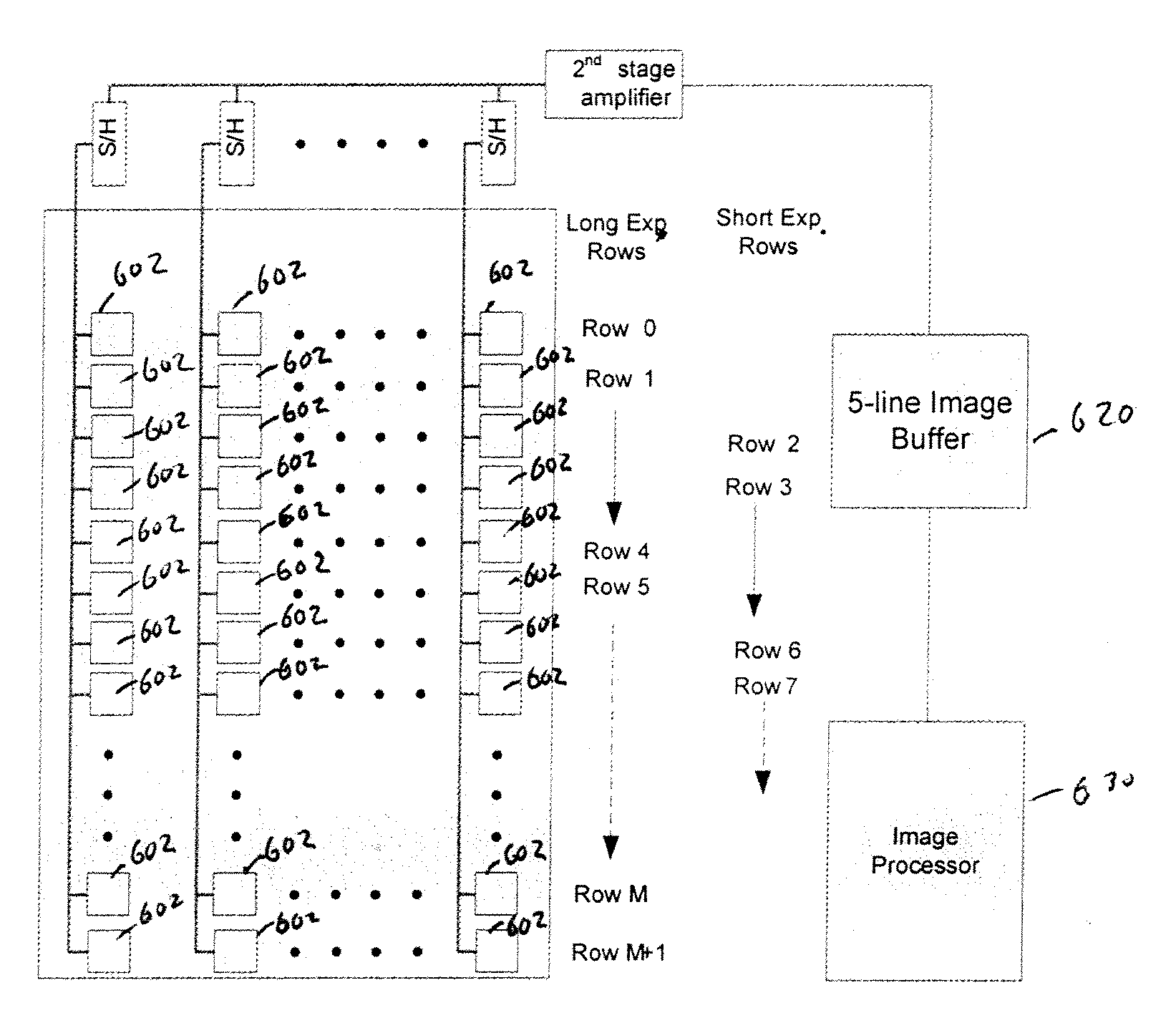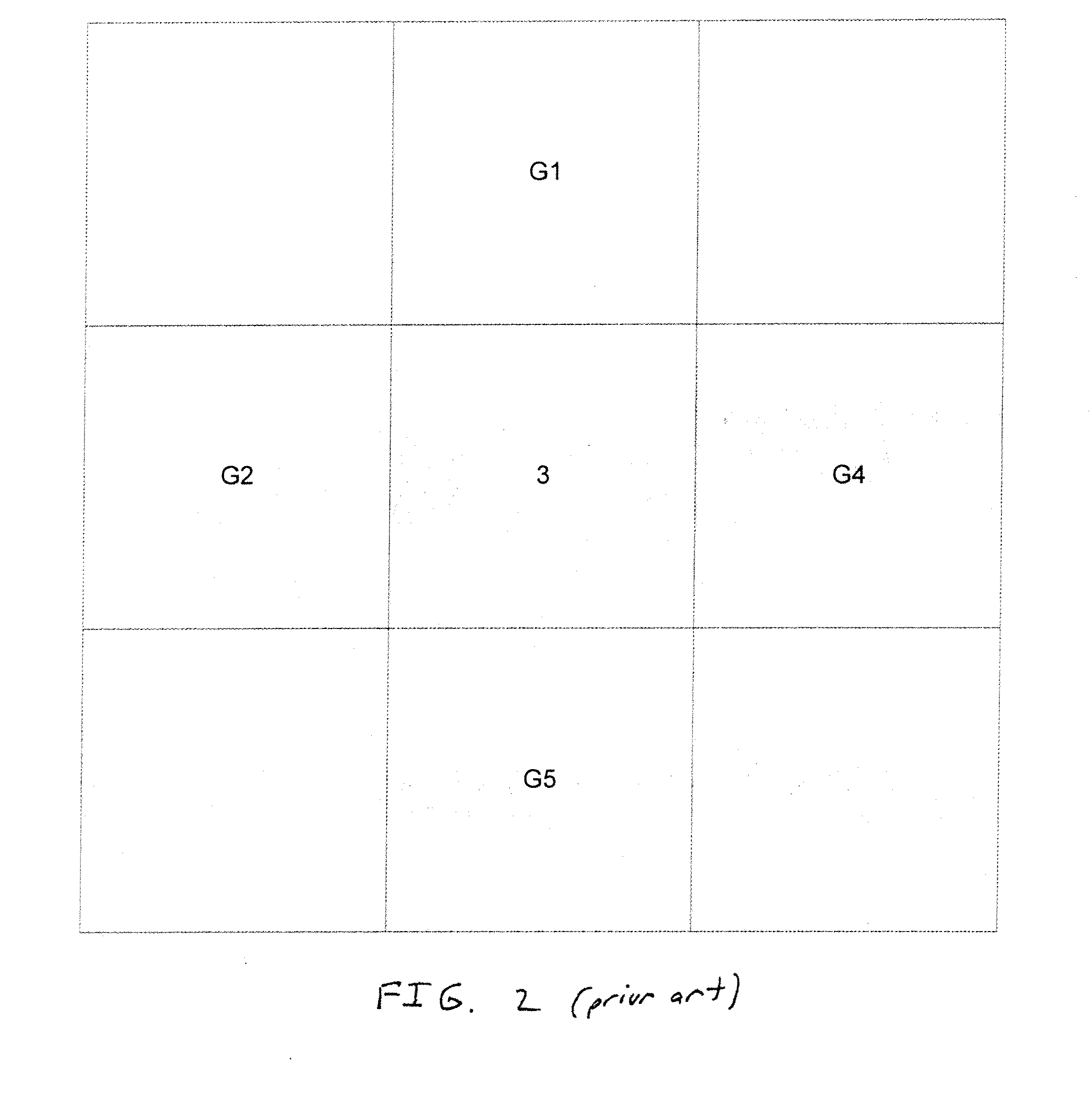High dynamic range sensor with reduced line memory for color interpolation
- Summary
- Abstract
- Description
- Claims
- Application Information
AI Technical Summary
Benefits of technology
Problems solved by technology
Method used
Image
Examples
Embodiment Construction
[0018]FIG. 3 illustrates an exemplary image sensing system in accordance with one embodiment of the present invention. A CMOS image sensor 300 includes a focal plane array 301 of pixels 302 (“a pixel array”). Each pixel 302 is a cell that includes a photo sensor (not shown) for producing a photo-generated charge in a doped region of the substrate. A conventional readout circuit (not shown) is provided for each pixel cell and includes at least a source follower transistor and a row select transistor for coupling the source follower transistor to a column output line. Sample and hold (S&H) elements 304 and amplifier 306 support the line-by-line read out of the rows. The pixel data is read out in a line-by-line basis and buffered in the line image buffer 320. In a preferred embodiment, the line image buffer is a 3-line image buffer 320 which has a buffer capacity sufficient to store 3 lines of image data for an image processor 330 operating in a full resolution mode. As an illustrative...
PUM
 Login to View More
Login to View More Abstract
Description
Claims
Application Information
 Login to View More
Login to View More - R&D
- Intellectual Property
- Life Sciences
- Materials
- Tech Scout
- Unparalleled Data Quality
- Higher Quality Content
- 60% Fewer Hallucinations
Browse by: Latest US Patents, China's latest patents, Technical Efficacy Thesaurus, Application Domain, Technology Topic, Popular Technical Reports.
© 2025 PatSnap. All rights reserved.Legal|Privacy policy|Modern Slavery Act Transparency Statement|Sitemap|About US| Contact US: help@patsnap.com



